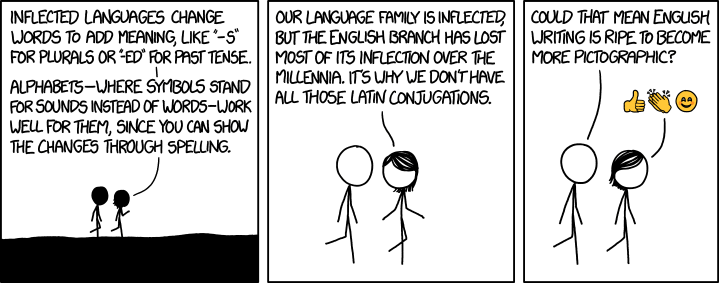July 20, 2016
#1709: Inflection explain

[Cueball and Megan, holding a hand up, are seen walking together from afar in silhouette.]
Megan: Inflected languages change words to add meaning, like “-s” for plurals or “-ed” for past tense.
Megan: Alphabets—where symbols stand for sound instead of words—work well for them, since you can show the changes through spelling.
[Zoom in on the two as Megan turns her head back towards Cueball and spreads her arms out.]
Megan: Our language family is inflected, but the English branch has lost most of its inflection over the millennia. It’s why we don’t have all those Latin conjugations.
[Cueball speaks as they walk on and Megan replies with three orange-yellow emoji: Thumbs Up Sign pointing right, Clapping Hands Sign pointing up left with two times three small lines to indicate the clapping and Smiling Face With Blushing (red) Cheeks and Smiling Eyes. Below given the closest match possible as of the release of the comic.]
Cueball: Could that mean English writing is ripe to become more pictographic?
Megan: 👍 👏 😊